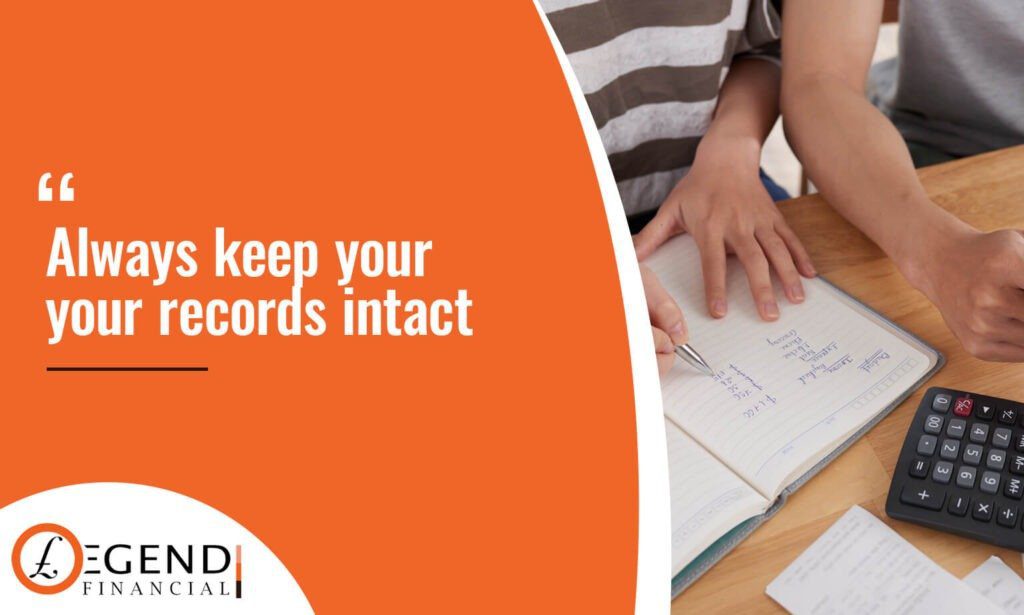Contents
VAT is often much simpler than it is generally portrayed, but this does not mean it should be taken lightly. The standard method of paying VAT is known as the Standard Rate Scheme. However, HMRC offers multiple alternate schemes, such as the Flat Rate Scheme, the Cash Accounting Scheme, and the Annual Accounting Scheme, which are available for independent companies with turnover below a specific sum. By putting in the work and proper calculations, you can generate the best approach for you.
In this article, we look to explain a few important questions about VAT registration:
- When do I need to register for VAT?
- What is the VAT threshold?
- What are the pros and cons of voluntary VAT registration?
- What is the VAT registration number?
Do I Need to Register for VAT?
“Not all organizations are lawfully required to pay VAT.”
If your turnover is under a specific threshold, you have no legitimate commitment to pay VAT. You should enroll for VAT if any of the following apply:
- Your VAT taxable turnover exceeds the current threshold of £85,000 (for the 2021/22 tax year). The VAT taxable turnover refers to the total value of everything you sell that isn’t exempt from VAT.
- You expect your VAT taxable turnover to exceed £85,000 in the next 30-day period.
- Your business had a taxable turnover exceeding £85,000 over the last 12 months.
You need to enroll for VAT within 30 days of satisfying any of these conditions. If you neglect to enlist on schedule, you’ll need to pay what you owe starting from the date that the registration should have been successful. HMRC may likewise force a punishment contingent upon the sum you owe, how late your enlistment is, and other situational factors.
What is the VAT threshold?
“The VAT threshold will, in general, be set every year in the Budget. Nonetheless, the VAT registration threshold has stayed unaltered at £85,000 since April 1, 2017. The VAT enlistment limit is set consistently, and the edge for enrolling for VAT expands typically every year.”
In 2017, the Autumn Budget announced the VAT threshold would stay at £85,000 for two years starting from April 2018, and in the 2018 Autumn Budget, an additional two years was added to this period. This implies that the 2017-2018 VAT threshold (£85,000) still applies in the current 2020-2021 duty year and will stay the same until at least April 2022. In the event that your available turnover passes the current VAT boundary, you have 30 days to inform HMRC and register for VAT. When your organization has finished its VAT enlistment, your business will become liable for:
- Charging VAT on the goods and services you offer to clients
- Paying VAT on the goods and services you purchase for your business
- Presenting a yearly VAT Return, and keeping a VAT account along with VAT records
VAT registration is necessary if your UK turnover of goods and services (that are not exempt from VAT) over the past year goes over the VAT threshold. VAT enrollment is likewise mandatory if you anticipate that your taxable turnover should surpass the VAT limit in the following 30 days alone.

Voluntary VAT Registration? Benefits And Downsides
Voluntary VAT registration might merit consideration, regardless of whether your available turnover is underneath the VAT threshold. For instance, if you are selling zero-rated products whilst buying standard-rated supplies for your business, VAT registration will permit you to recover the VAT you are paying for your supplies. Additionally, regardless of whether you sell standard-rated merchandise, VAT enrollment may be profitable if your clients are other VAT-enlisted organizations that can heal the VAT you should charge after VAT registration.
“You should have legitimate VAT records and meet other prerequisites.”

Advantages
- It improves the view of your business. Enlisting for VAT will, in general, provide validity to your business and cause your organization to seem more extensive and settled. This can upgrade your market appeal to other organizations and clients.
- You can recover VAT on labour and products you’ve bought from other organizations, and this can be favorable in certain circumstances. For instance, you might be assembling and selling youngsters’ garments (a zero-rated thing) yet regularly pay the standard VAT rate for a large portion of your buys – going from crude materials to assembling costs. By any chance your input tax is higher than your output tax, you will qualify for VAT exemptions.
VAT is charged when a VAT-enlisted business offers good and services to either another business or to a non-business client. At the point when VAT-enlisted organizations purchase products or services, they can by and large recover the VAT they have paid.
Disadvantages
- As a VAT-enlisted business, there are VAT rules and record-keeping necessities you’ll have to consent to. A portion of these principles can be convoluted, and you might be at risk of penalty if you commit an error.
- It makes your products or services appear to be more costly. Charging VAT can make your labor and products more costly – and accordingly less engaging, especially if your clients or customers are not VAT-enrolled businesses, or are end buyers who can’t recover VAT.
- You might be confronted with a startling VAT bill. If your output VAT is higher than the input VAT, as it almost consistently will be, then at that point, you need to pay the distinction to HMRC. This can create income issues if you’re not ready for an unforeseen VAT bill. Remember that at 20%, these will be huge.
HMRC frequently takes a forceful position because of huge sums in question, the shifting intricacies, and on the grounds that the cases are very touchy. Businesses should know about these issues and plan at the earliest chance.
Vat Registration Number
“In the UK, VAT numbers are nine digits long and consistently have the prefix ‘GB’.”
If you’re managing a provider in another EU country, its VAT number will follow an alternate organization, with its own nation code. HMRC gives a rundown of ID designs from European Union part states on its site. If you recover VAT without a legitimate VAT number from your provider, it could prompt HMRC to dismiss your case.
With its occurrence, you could be left taking care of everything or managing a severe measure of the administrator to correct the circumstance! At the point when you’re searching for the VAT number of another business, your first port of call ought to be any receipt it has provided to you. If the business is enlisted for VAT, its ID ought to be recorded on the entirety of their solicitations.
If you pay VAT to a provider yet, there is no enlistment number on the receipt they give, you should get in touch with them promptly – you’ll have to have a legitimate VAT receipt from them to recover any VAT they’ve charged you.
Calling the HMRC VAT helpline
Checking the VIES website
You can utilize the European Union’s VAT Information Exchange System (VIES) to check the legitimacy of UK VAT numbers and VAT numbers from the more extensive EU. By entering the enlistment numbers and applicable nation codes into the fields given, you can check if a provider’s VAT number is legitimate.
If the provider’s VAT registration is displayed as invalid by VIES, you should contact them to get the correct VAT number ASAP.
There are various other ways to discover the VAT number of another business. What if you’ve effectively communicated with them, like a past receipt, the number ought to be on there. It might likewise show up on other documentation, for example, protection shapes or guarantees. To discover a VAT number, search for two letters followed by a hyphen and 7-15 digits; it will, for the most part, be at the top or lower part of the page.
If this isn’t a choice, the criminal investigator’s work truly starts. The initial step guarantees you know the organization’s full, official name and where it’s settled. Companies House can be a helpful hotspot for this data or quest at the organization’s stock cost in the UK.
Applying For A VAT Registration Exception
If your business’ available turnover is briefly over the VAT threshold, you can apply for a registration ‘exception’. If provided with an exception, you will not be required to register for VAT. This is something you should immediately apply for if the situation arises – it’s not adequate to contend the case later. To apply for the exception, you should inform HMRC to give valid justifications for why you shouldn’t need to register, which may mean:
- Demonstrating that crossing the VAT threshold on this occasion is a one-off event; and
- Explaining why there’s no likelihood that the threshold will be exceeded in the foreseeable future.
If HMRC accepts your evidence, they will consider you as an exception and you will not have to register for VAT. For instance, if you sell £87,000 worth of items between January 1 and December 31, 2020, and you can show that you will sell £82,000 worth of products between January 1 and December 31 2021, you will hence be viewed as just briefly over the VAT limit, and HMRC can make an exemption from registration.
There’s a chance that they reject your case, and you’ll need to enroll the business for VAT. Regardless of whether HMRC acknowledges your application for a VAT exemption, remember that rejections are a rare occurrence, so do not hesitate to apply. If your conditions change and your turnover again surpasses the VAT threshold, you’ll need to enroll for VAT (or apply for a further special case).
Benefits Of Being VAT Registered

- You’ll give off an impression of being a greater business if you’re charging VAT, as far as possible for obligatory enlistment is £85,000 on VAT turnover (2020/21).
- If you offer goods and services to VAT-registered organizations, they can recover the VAT from HMRC, so your selling cost is as yet cutthroat, and you will want to recuperate the VAT on your expenses.
- Keeping up with records will give better data for maintaining your business.
- You can claim back VAT on certain things that you bought preceding the date of VAT enrollment. Converse with your bookkeeper about the specific subtleties
- If you are in a VAT reclaim situation, then you will be better off.
- You’re likely to receive repayments because your VAT sales are lower than your VAT costs. This may be because you’re accumulating stock or because your sales are below the standard rate of 20% at either the reduced rate of 5% or zero rate 0%
These benefits to being VAT registered may appeal to you as a small business. However, remember that you will have to keep accurate records and submit regular VAT returns. There are many software solutions to assist with VAT, or your accountant can help. Legend Financial highly hopes we have given you accurate information on VAT registration.
References
Forbes. (n.d.). Retrieved from https://www.forbes.com/sites/taxnotes/2021/07/13/exploring-the-eu-vat-e-commerce-reforms/?sh=25794a5e3c9f
gov.uk. (n.d.). Retrieved from https://www.gov.uk/register-for-vat
gov.uk. (n.d.). Retrieved from https://www.gov.uk/government/statistics/value-added-tax-vat-annual-statistics
government, U. (n.d.). gov.uk. Retrieved from https://www.gov.uk/guidance/register-for-vat












One Response
Fantastic breakdown! This blog provides a clear understanding of VAT registration and its importance. Essential read for anyone stepping into the business world. Thanks for simplifying a complex topic!